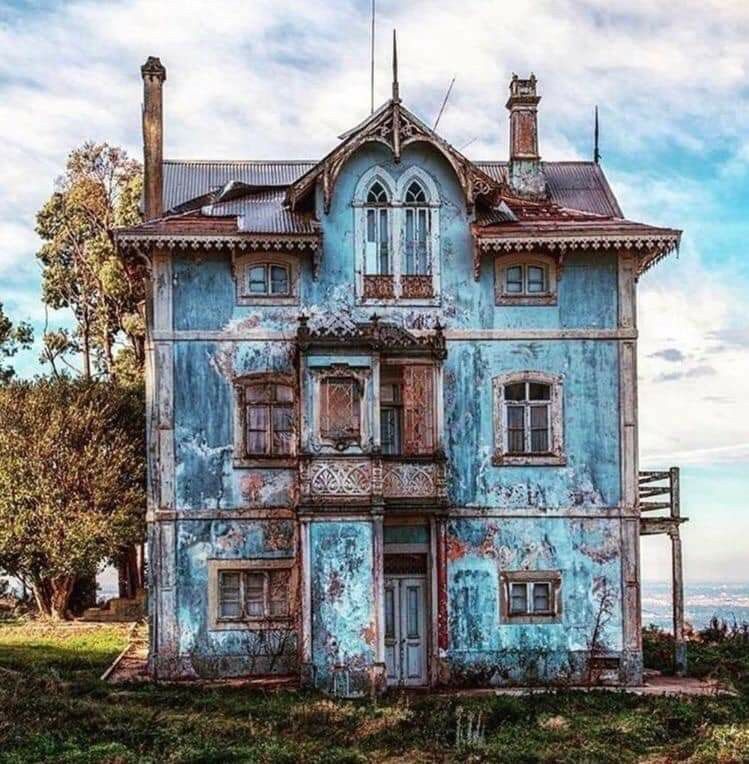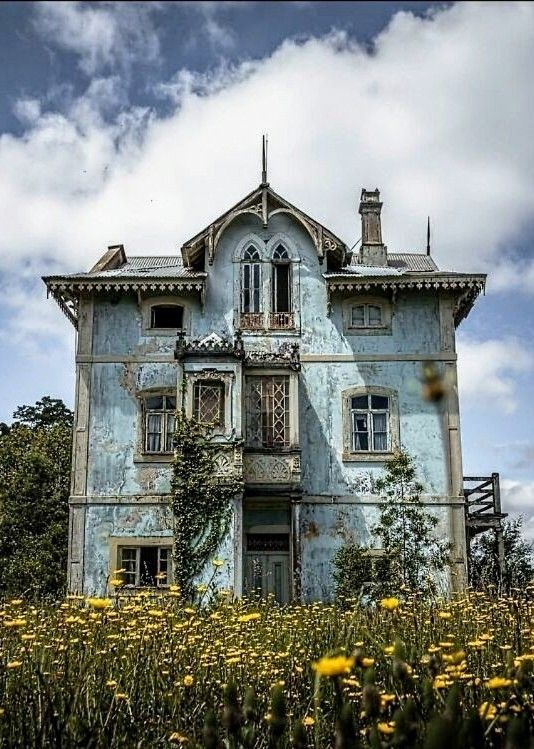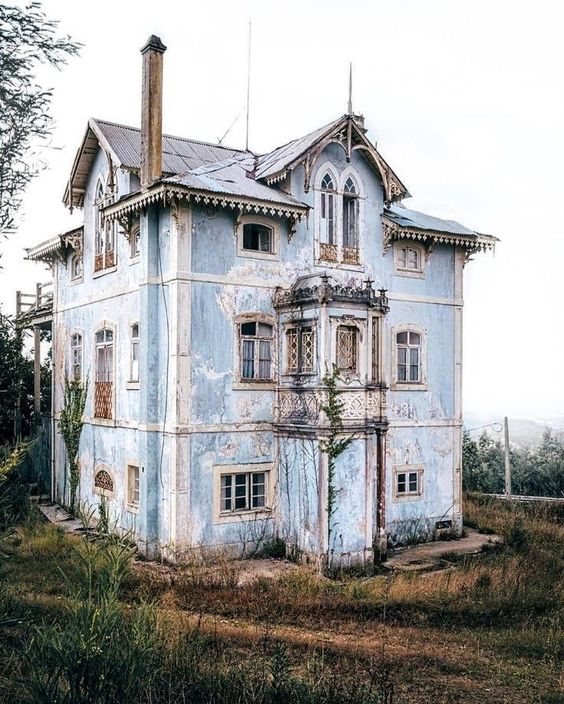Casa Azul – Portugal’s Victorian Gothic Jewel

The hauntingly beautiful abandoned Casa Azul sits atop a small hill in Portugal. This quirky house was built just before, or around the turn of the 20th Century. This location is also sometimes called Villa Victorienne, or Chalet Do Conde (Count’s Chalet).
The house was owned by a Count, who was a lover of the arts and a collector of beautiful artworks and rare books. His city residence was filled with his prized collection, making the palace part museum and part grand library. Above all else he had an affection for Gothic items, especially sculptures. Casa Azul was his second home, his quiet refuge away from everything where he would retreat to unwind.

After the Count’s death, his family sold off his art and literature collections and donated the palace which had once housed them. However, the relatively humble Casa Azul appears to have been left in limbo. Despite having heirs, this beautiful blue house stands derelict and falling victim to decay.
The house was up for sale for €1,300,000, but I have been unable to confirm if it was sold or delisted. Either way, there is now machine tracks encircling the property and vegetation clearing has been done. Is Casa Azul about to be renovated, or are the demolition crews incoming? Only time will tell.

The architecture of Casa Azul is clearly influenced by the Count’s love of Gothic and Gothic Revival style. During this time (late 19th to early 20th century), it was common to mix in Victorian-era elements into Gothic Revival, producing the Victorian Gothic style. This style of house is often painted in pastel colours, with white decorative features which gives these residences a light and romantic appearance. At this time, on the other side of the Atlantic, the American’s were building houses in a similar style, called Carpenter Gothic.
Casa Azul is a spectacular example of residential Gothic Revival architecture. A key feature of this style is skyward elongation, and elements that emphasise the vertical height of the building. The roof is steeply pitched with dormers, and the tall gables centred over doorways.

The roof overhangs are ornamented with beautiful wooden trims (called vergeboards, or “gingerbread” trim). This ornamentation is more elaborate at the gables. Each gable is topped with a tall spike, called a roof finial. The tall slender windows and doorways feature the classic pointed arched shape, a signature feature of Gothic/Gothic Revival. The first floor balconies are supported by decorative turned posts, creating porches at the entrances.
Image credits go to original owners.